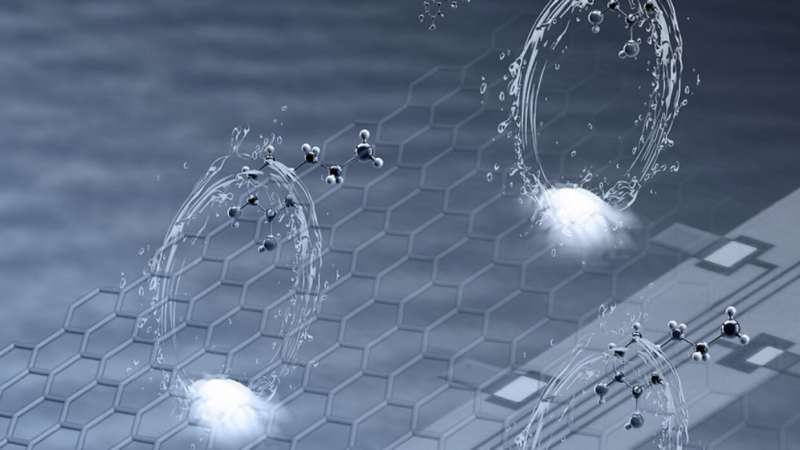Researchers flip the switch to make microsensors super sensitive to biomolecules

A team led by researchers at the New York University Tandon School of Engineering have found a new way of enhancing the performance of electrochemical micro-sensors. This discovery could lead to the detection of biomolecules, such as dopamine, at lower concentrations than is possible today. Their findings are described in a paper published in the journal Biosensors and Bioelectronics.
Dopamine molecule activity in the brain is associated with important functions such as motivation, motor control, reinforcement, and reward. Researchers and clinicians commonly monitor neurotransmitter activity in the brain through electrochemical micro-sensors made of carbon. However, due to their limited sensitivity, existing microsensors can detect only large changes in dopamine levels. They can also record from only one site in the brain at a time.
To support the multi-site mapping of dopamine activities in the brain, the NYU Tandon research team recently developed planar micro-sensors using a carbon nanomaterial, called nano-graphitic carbon.
"We use nanofabrication techniques, similar to those used for building chips in consumer electronics, to create an array of many planar electrochemical micro-sensors," said Davood Shahrjerdi, associate professor of electrical and computer engineering and principal investigator of the study. "Our sensors are small—comparable to a neuron cell body—and can be packed close to each other for recordings with higher spatial resolution," he added.
An important finding by the team is that the sensor performance can be adjusted by engineering the material structure of the nano-graphitic carbon. The details of the sensor development are described in a previously published paper that appeared in Scientific Reports.
"Our study in Scientific Reports suggests that the sensor performance should remain unchanged if we reduce the operating voltage, since the sensor performance is controlled by the material structure," added Shahrjerdi.
However, the team made a surprising observation that the amplitude of the sensor output in response to dopamine molecules was increased by reducing the operation voltage.
"We initially thought that perhaps there was something wrong with the measurements," said Edoardo Cuniberto, a Ph.D. student in the NYU Nanolab at NYU Tandon, who is the lead author in the study. "With over a year of significant additional experimentations and theoretical simulations, we not only confirmed our initial observation, but we were also able to explain the physics behind our surprising observation," Cuniberto explained.
The investigators demonstrated sensors with record performance by combining the new voltage-dependent phenomenon with their approach of engineering the material structure. "We are excited about exploring the prospects of our new sensor technology for future brain studies," said Shahrjerdi.
In addition to Cuniberto, the team included Zhujun Huang, a Ph.D. student at NYU Tandon; Abdullah Alharbi of NYU Tandon and the King Abdulaziz City for Science and Technology, Riyadh, Saudi Arabia; and Ting Wu and Roozbeh Kiani of the NYU Center for Neural Science.
More information: Edoardo Cuniberto et al. Anomalous sensitivity enhancement of nano-graphitic electrochemical micro-sensors with reducing the operating voltage, Biosensors and Bioelectronics (2021). DOI: 10.1016/j.bios.2021.112966
Edoardo Cuniberto et al. Nano-engineering the material structure of preferentially oriented nano-graphitic carbon for making high-performance electrochemical micro-sensors, Scientific Reports (2020). DOI: 10.1038/s41598-020-66408-9
Journal information: Biosensors and Bioelectronics , Scientific Reports
Provided by NYU Tandon School of Engineering





















